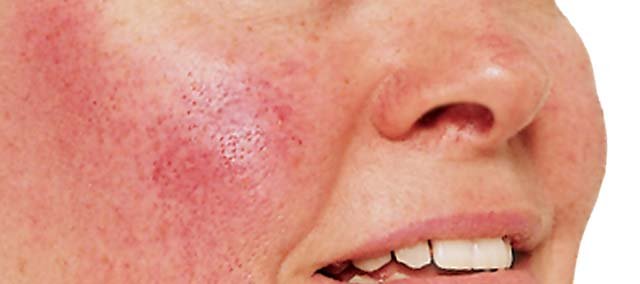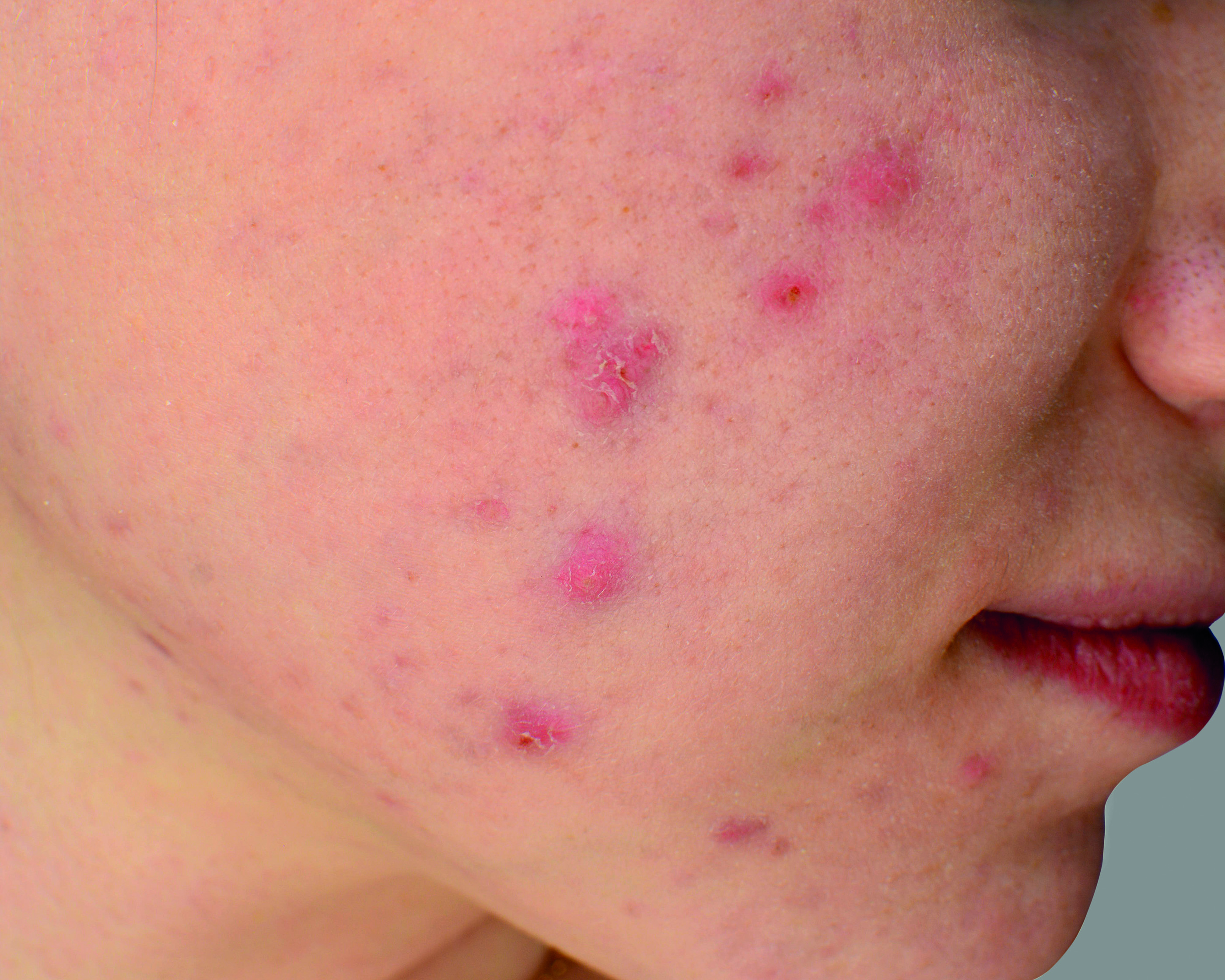Shoulder ‘brightness’ on ultrasound may be a sign of diabetes
A shoulder muscle that appears unusually bright on ultrasound may be a warning sign of diabetes, according to a study presented at the recent 2018 annual meeting of the Radiological Society of North America (RSNA).
Over a decade ago, musculoskeletal radiologist Dr Steven B Soliman, from Henry Ford Hospital in Detroit, US, began noticing a pattern when images of the deltoid muscle appeared bright on ultrasound.
“Every time we would ask one of these patients if they were diabetic, they would say ‘yes’ or they would tell us they were borderline and not taking any medications,” Dr Soliman said.
The observations prompted Dr Soliman and colleagues at Henry Ford to conduct a study to see if the brightness, or echogenicity, of the shoulder muscle could be predictive of diabetes. The results revealed that by using the echogenicity of the muscle, radiologists were able to predict type 2 diabetes in almost nine-out-of-10 patients. Brightness on ultrasound was also an accurate predictor of pre-diabetes.
For the study, Dr Soliman and colleagues compiled 137 shoulder ultrasounds from patients with type 2 diabetes, including 13 with pre-diabetes, as well as 49 ultrasounds from obese patients without diabetes.
The researchers showed the ultrasounds to two musculoskeletal radiologists who were unaware whether the images came from patients with or without diabetes. The radiologists were asked to classify the patients, based on the brightness of their shoulder muscle, into one-of-three categories: normal, suspected diabetes and definite diabetes. A third musculoskeletal radiologist acted as an arbitrator in the cases where the other two radiologists disagreed.
The results showed that a consensus diagnosis of “definite diabetes” by the radiologists was a powerful predictor of diabetic status. Using the shoulder ultrasounds, the radiologists correctly predicted diabetes in 70-of-79 patients, or 89 per cent.
A hyperechoic, or unusually bright-looking, deltoid muscle was also a strong predictor of pre-diabetes. The musculoskeletal radiologists assigned all 13 pre-diabetic ultrasounds to either the “suspected diabetes” or “definite diabetes” categories.
“A lot of the patients weren’t even aware that they were diabetic or pre-diabetic,” said Dr Soliman,
“The reasons for the brighter-appearing shoulder muscle on ultrasound among patients with diabetes is not completely understood, according to Dr Soliman, but the researchers suspect it is due to low levels of glycogen in the muscle. A study of muscle biopsies in patients with diabetes found that muscle glycogen levels are decreased up to 65 per cent. Prior research has also shown that the muscles of athletes appear brighter on ultrasound after exercise, when their glycogen stores are depleted.
The researchers plan to continue studying the connection between shoulder muscle echogenicity and diabetes with an eye toward quantifying the phenomenon and seeing if it is reversible.
MRI could be used to help predict Alzheimer’s disease
MRI brain scans perform better than common clinical tests at predicting which people will go on to develop Alzheimer’s disease, according to a study presented at the 2018 RSNA annual meeting in Chicago.
Alzheimer’s disease is the most common cause of dementia in the world and is increasing globally, noted the study’s lead author Dr Cyrus A Raji, Assistant Professor of Radiology at the Mallinckrodt Institute of Radiology at Washington University School of Medicine in St Louis. “As we develop new drug therapies and study them in trials, we need to identify individuals who will benefit from these drugs earlier in the course of the disease.”
Common predictive models like standardised questionnaires used to measure cognition and tests for the APOE4 gene, a gene variant associated with a higher risk of Alzheimer’s disease, have limitations.
MRI exams of the brain using diffusion tensor imaging (DTI) are a promising option for analysis of dementia risk in examining the brain’s white matter.
DTI provides different metrics of white matter integrity, including fractional anisotropy (FA), a measure of how well water molecules move along white matter tracts. A higher FA value indicates that water is moving in a more orderly fashion along the tracts, while a lower value means that the tracts are likely damaged.
For the new study, Dr Raji and colleagues set out to quantify differences in DTI in people who decline from normal cognition or mild cognitive impairment to Alzheimer’s dementia, compared to controls who do not develop dementia. They performed brain DTI exams on 61 people drawn from the Alzheimer’s Disease Neuroimaging Initiative, a major, multisite study focusing on the progression of the disease.
About half of the patients went on to develop Alzheimer’s disease, and DTI identified quantifiable differences in the brains of those patients. People who developed the disease had lower FA compared with those who didn’t, suggesting white matter damage. They also had statistically significant reductions in certain frontal white matter tracts.
“DTI performed very well compared to other clinical measures,” Dr Raji said. “Using FA values and other associated global metrics of white matter integrity, we were able to achieve 89 per cent accuracy in predicting who would go onto develop Alzheimer’s disease. The Mini-mental State Examination and APOE4 gene testing have accuracy rates of about 70-71 per cent.”
The researchers conducted a more detailed analysis of the white matter tracts in about 40 of the study participants. Among those patients, the technique achieved 95 per cent accuracy, Dr Raji said.
While more work is needed before the approach is ready for routine clinical use, the results point to a future role for DTI in the diagnostic workup of people at risk from Alzheimer’s disease. Many people already receive MRI as part of their care, so DTI could add significant value to the exam without substantially increasing the costs, Dr Raji stated.
Perhaps most importantly, MRI measures of white matter integrity could speed interventions that slow the course of the disease or even delay its onset.
Artificial intelligence may help reduce gadolinium dose in MRI
Researchers are using artificial intelligence (AI) to reduce the dose of the contrast agent gadolinium that may be left behind in the body after MRI exams, with positive results to date, the annual RSNA meeting heard.
Recent studies have found that trace amounts of the metal remain in the bodies of people who have undergone exams with certain types of gadolinium.
“There is concrete evidence that gadolinium deposits are left behind in the brain and body,” said study lead author Dr Enhao Gong, PhD, researcher at Stanford University in Stanford, California. “While the implications of this are unclear, mitigating potential patient risks while maximising the clinical value of the MRI exams is imperative.”
Dr Gong and colleagues at Stanford have been studying AI deep learning as a way to achieve this goal. To train the deep learning algorithm, the researchers used MRIs from 200 patients who had received contrast-enhanced MRI exams for a variety of indications. They collected three sets of images for each patient: Pre-contrast scans, done prior to contrast administration and referred to as the zero-dose scans; low-dose scans, acquired after 10 per cent of the standard gadolinium dose administration; and full-dose scans, acquired after 100 per cent dose administration.
The algorithm learned to approximate the full-dose scans from the zero-dose and low-dose images. Neuroradiologists then evaluated the images for contrast enhancement and overall quality.
Results showed that the image quality was not significantly different between the low-dose, algorithm-enhanced MRIs and the full-dose, contrast-enhanced MR images. The initial results also demonstrated the potential for creating the equivalent of full-dose, contrast-enhanced MR images without any contrast agent use.
These findings suggest the method’s potential for dramatically reducing gadolinium dose without sacrificing diagnostic quality, according to Dr Gong.
“Low-dose gadolinium images yield significant untapped clinically useful information that is accessible now by using deep learning and AI,” he said.
Now that the researchers have shown that the method is technically possible, they want to study it further in the clinical setting, where Dr Gong believes it will ultimately find a home.
Cryoablation shows promise in treating low-risk breast cancers
Cryoablation shows early indications of effectiveness in treating women with low-risk breast cancers, according to research presented at the RSNA 2018 annual meeting.
Researchers said that over the four years of the study, there has only been one case of cancer recurrence out of 180 patients.
“If the positive preliminary findings are maintained as the patients enrolled in the study continue to be monitored, that will serve as a strong indication of the promise of cryotherapy as an alternative treatment for a specific group of breast cancer patients,” said study lead author Dr Kenneth R Tomkovich, radiologist at Princeton Radiology and Director of Breast Imaging and Interventions at CentraState Medical Centre in Freehold, New Jersey.
Cryoablation has been used to treat cancers in other organs in the body, including the kidneys and lungs, but has yet to become an established treatment for breast cancer. Dr Tomkovich began studying it for that indication more than 10 years ago, as imaging advances in mammography and ultrasound and the development of tomosynthesis enabled the detection of more low-risk cancers.
“We’re finding smaller and smaller breast cancers, but we’re still treating them the same way we did 30 years ago,” Dr Tomkovich noted.
As part of the Ice 3 trial, Dr Tomkovich and colleagues at 18 centres across the US have been studying cryoablation as a primary treatment for breast cancer without surgical lumpectomy. Starting in 2014, the researchers began performing cryoablation on women aged 60 years and over with biopsy-proven, low-risk breast cancer. The patients undergo the procedure, which takes less than an hour, and are then followed for recurrence with mammography at six and 12 months and then annually for five years.
As of now, the researchers have three-year follow-up data on about 20 patients and two-year follow-up data on more than 75 patients. The preliminary results have been very promising. The procedure was successfully completed in all patients, and no serious adverse events have been reported. Only one patient experienced a recurrence, giving the procedure a 99.4 per cent success rate so far.
“Lumpectomy is 90 to 95 per cent effective at removing cancer,” Dr Tomkovich said. “We were going for something close to that, but our preliminary results have been even better. We’re getting the same results at 18 centres around the country.”
Cryoablation has advantages over ablation techniques that use heat to destroy tumours. For one, tissue retains its appearance when frozen, while heating tends to deform it, making imaging less reliable. In addition, there is preliminary evidence from studies on mice that cryoablation can stimulate an immune system response against cancer cells in the body.
Final results of the study will be published when five-year follow-up data is available for all the women who were treated.
“If it’s proven that cryoablation works, then some women might be more inclined to opt for it over surgery,” Dr Tomkovich said.











Leave a Reply
You must be logged in to post a comment.